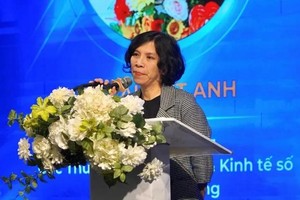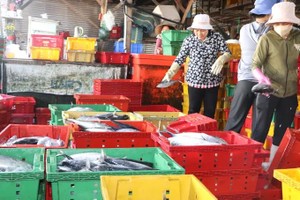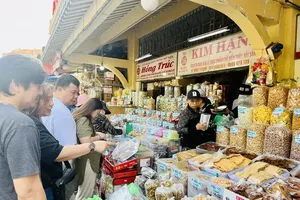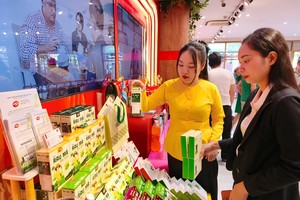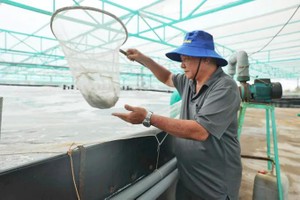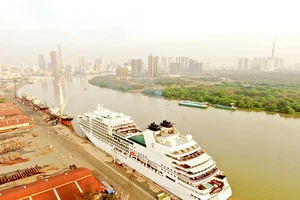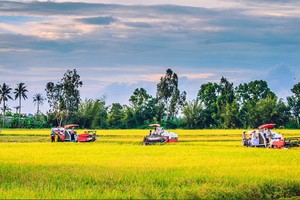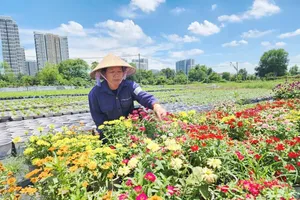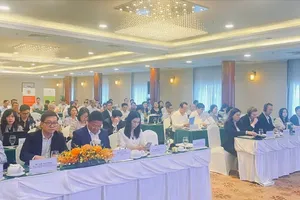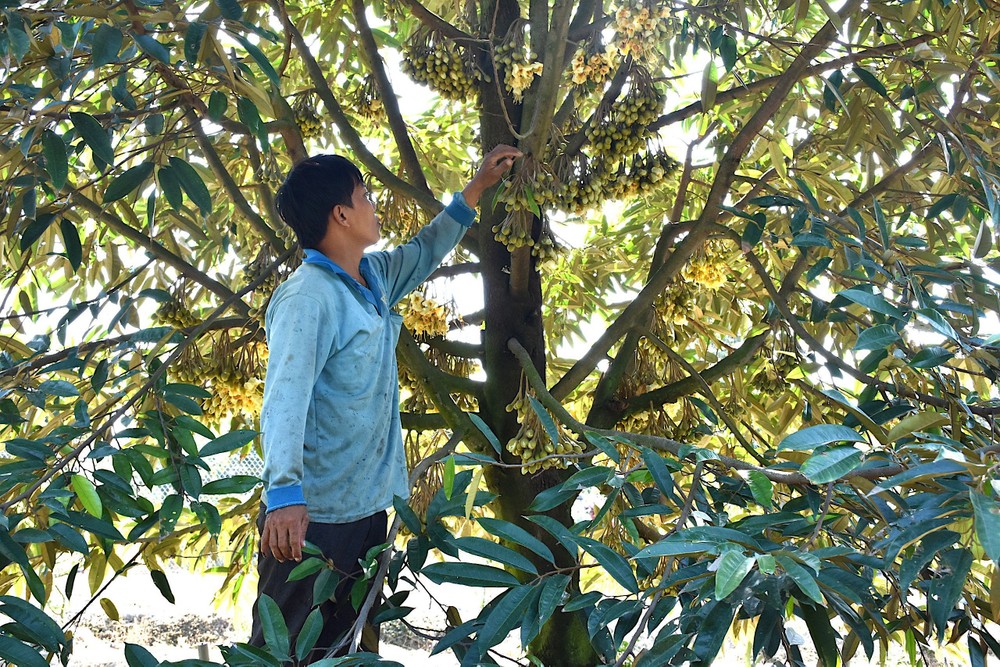
Even, farmers in some places grow durian on alum-saline soil, in areas outside the planting area planning. However, experts warned farmers not to grow durian based on their emotions but not according to the recommendations of the Ministry of Agriculture and Rural Development, or else they would suffer losses.
In recent years, durian growers in Cai Lay District in Tien Giang Province have made great profits. Some households earned billions of Vietnamese dong after each harvest. Therefore, farmers in many other localities in the province rushed to cut down star apple, mango, dragon fruit, and green-skinned grapefruit to grow durian.
In the past 2 years, nearly 1,000 hectares of green grapefruit and mangoes in Cai Be District have been cut down and 1-2-year-old durian trees were planted, bringing the total durian area in this locality to more than 7,000 hectares.
Meanwhile, in Tan Phuoc District in Tien Giang Province, local authorities and functional agencies have recently advised farmers not to grow durian, because this land is rich in alum which is unsuitable for growing durian trees.
However, despite agricultural experts’ warnings, many farming households in Tien Giang and neighboring provinces such as Dong Thap are still massively cutting down their fruits and then improving the land to grow durian. Farmers in other localities such as Phung Hiep District in Hau Giang Province, Phong Dien and Thoi Lai districts in Can Tho, Giong Rieng District in Kien Giang Province have all grown durian trees in their orchards making the areas increase rapidly.
However, not all farmers achieved fruitful results. For example, many durian orchards in Giong Rieng District died due to lack of water and alum and salinity contamination.
According to Director of the Department of Agriculture and Rural Development of Tien Giang Province Nguyen Van Man, the department didn’t encourage farmers to grow fruit trees in alum-contaminated lands, saline soils or outside planned areas. The department advised farmers to pay attention to improving the quality of commercial durian fruit to meet the standards set by China so that China will grant an official growing area code for exports.
Every year, responsible agencies develop detailed plans for each crop group and conversion area of each locality based on the orientation of the province's crop conversion project.
However, farmers planted fruit trees or destroyed other fruit trees to plant durian trees by themselves without following the agricultural sector’s plan.
Currently, Tien Giang Province is one of the localities with the largest durian growing area in the Mekong Delta with more than 22,000 hectares while more than 500 hectares of durian are grown mainly in Tan Thanh, Thanh Hoa, Moc Hoa districts of Long An Province.
The Department of Agriculture and Rural Development of Long An Province required local authorities to strictly manage areas planned for durian growing with a determination to maintain the planting areas which are granted codes for durian trees. At the same time, growers are recommended not to cut down other crops to switch to growing durian for immediate profits.
According to Director of the Southern Fruit Institute Vo Huu Thoai, although durian trees generate high economic efficiency, farmers pour more money into growing durian. For instance, a durian tree costs about VND4 million-VND7 million from planting to harvesting and 200 trees are grown in one hectare.
Thus, he proposed farmers carefully think before growing durian, because farmers will suffer great losses. Director Vo Huu Thoai said that the Ministry of Agriculture and Rural Development has sent a document to durian-growing provinces requesting not to expand the durian-growing areas, especially in areas with heavy alum contamination, without embankments, and areas lacking water. He disclosed that durian is mainly exported to China whose agricultural authority only granted planting area code for about 12,000 hectares, but the durian growing area was about 110,000 hectares.
He suggested farmers who grow low-priced agricultural products should not rush to destroy them but need to learn about the market or seek advice from agricultural agencies, and at the same time reduce investment to lower production costs. After prices of their agricultural products increase again, farmers will take care of their fruits, thus reducing losses for farmers compared to hastily cutting and investing in new planting.
